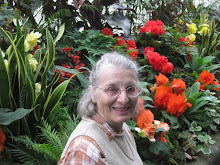 Welcome to Lifou. This largest island of an archipelago known as the Loyalty (Loyaute) Islands, is called Drehu by its inhabitants. A large, flat coral atoll, these islands are administered out of Noumea and considered a dependency of New Caledonia. While Noumea wears a decidedly French facade, Lifou's 10,000 citizens are culturally Kanak (Melanesian) except for a French military presence. The islands were first discovered by Melanesian seafarers. (Thank goodness, someone got here before Captain Cook though he gets credit for naming New Caledonia!) Melanesia can be considered a cultural, geographical, or political entity. Just take a look at the Wikipedia site for a brief description and then check out the discussion on Wikipedia for all the arguing over the accuracy of the information. I choose at this time to think of it as geographical as all the islands I visited are located in the area described as Melanesia.
Welcome to Lifou. This largest island of an archipelago known as the Loyalty (Loyaute) Islands, is called Drehu by its inhabitants. A large, flat coral atoll, these islands are administered out of Noumea and considered a dependency of New Caledonia. While Noumea wears a decidedly French facade, Lifou's 10,000 citizens are culturally Kanak (Melanesian) except for a French military presence. The islands were first discovered by Melanesian seafarers. (Thank goodness, someone got here before Captain Cook though he gets credit for naming New Caledonia!) Melanesia can be considered a cultural, geographical, or political entity. Just take a look at the Wikipedia site for a brief description and then check out the discussion on Wikipedia for all the arguing over the accuracy of the information. I choose at this time to think of it as geographical as all the islands I visited are located in the area described as Melanesia. The ship weighed anchor (i.e. docked) at the tiny township of We (pronounced whey), along the beautiful bay, Baie de Chateaubriand. Again many passengers got no further than this outstanding Coral Sea beach to swim and snorkel. I plan to have a snorkeling experience, but here I opted to learn about the Kanak culture instead.
The ship weighed anchor (i.e. docked) at the tiny township of We (pronounced whey), along the beautiful bay, Baie de Chateaubriand. Again many passengers got no further than this outstanding Coral Sea beach to swim and snorkel. I plan to have a snorkeling experience, but here I opted to learn about the Kanak culture instead.A small group piled into two well-used SUVs and were driven to a location prepared for a cultural display. The first thing we were shown was the Roman Catholic Church, one of two in this island. The other that we did not see is Protes'tant (second syllable accented).
Next the tour group was herded shoeless into a large hut, the tribal meeting hall.
Note the unusual fence to the left: logs laid across a frame.
Leaving the tribal meeting place, I noticed two structures nearby, perhaps deliberately placed there. One was a contemporary appearing dwelling and next door a well maintained traditional thatched dwelling. These seemed anomalous as when we drove to this site from the wharf, most homes along the dirt road were shabby shacks of corrugated tin and occasionally a thatched round hut.


Coconuts with their tops lopped off provided tasty liquid refreshment. Coconut, in the form of copra, along with tourism, is a main industry on Lifou.

The women demonstrated how they made bougna (pronounced boonya); vegetables, fruits and meat wrapped in banana or other leaves, were placed over hot coals, covered with shovelfuls of earth and baked for several hours. In contemporary Lifou culture, bougna is reserved for celebratory occasions like weddings.
Here the women dish out some already prepared bougna for the tourists to sample (caution to the winds here, but to my knowledge no one became ill). Lacking seasoning, it is very plain fare.
I spent a few of my Central Pacific Francs here sampling some French do-nuts and a banana pastry laid out on tables in an open air market. I can say with authority that French culinary skill did not become an adopted aspect of this French colony. Other tourists spent their francs on the various handicrafts offered for sale, including products done by costumed basket weavers demonstrating their skill.
Our next port of call is Vili, Vanuatu. Until then ...
Cheers,
Kiwi Traveler










No comments:
Post a Comment